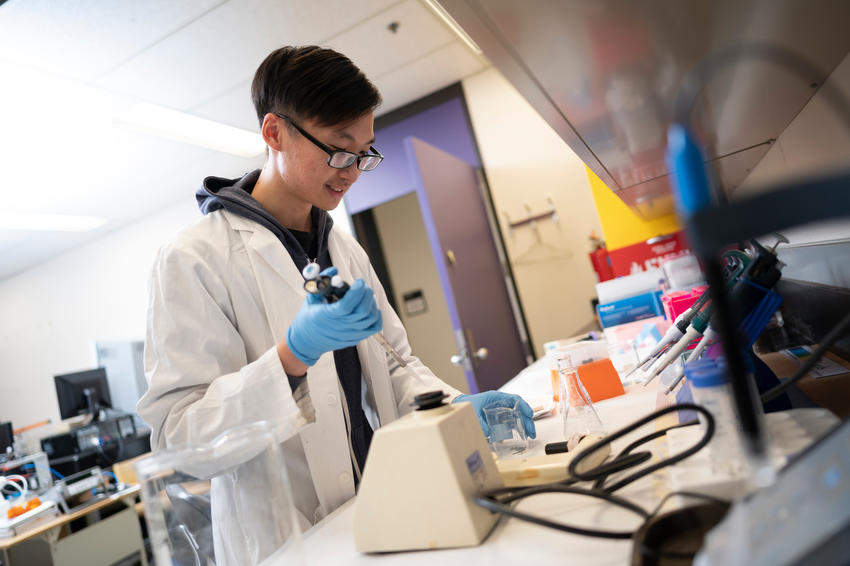MDRCBB joins interprofessional center for pharmaceutical research

A School of Dentistry research hub is set to take part in an innovative, collaborative center that will transform the way we formulate and manufacture pharmaceutical drugs.
The Minnesota Dental Research Center for Biomaterials and Biomechanics is joining the Center for Integrated Material Science and Engineering for Pharmaceutical Products (CIMSEPP), an Industry-University Cooperative Research Center backed by the National Science Foundation. CIMSEPP is the product of a collaboration between Raj Dave of the New Jersey Institute of Technology and Calvin Sun, PhD, FRSC, professor of pharmaceutics at the University of Minnesota College of Pharmacy.
“Historically, the development process for pharmaceutical products has been empirical, and the manufacturing process is inefficient,” explained Sun. “My lab has been doing research to tackle this problem by employing materials sciences and engineering principles with success. I hope the pharmaceutical industry will more broadly adopt this research approach through collaborative research with Center faculty members.”
The Center seeks to design and manufacture particulate and composite products for pharmaceutical companies and other industries that work with active ingredients.
Sun hopes the Center will “become an internationally recognized center for materials science and engineering-based design and manufacturing of pharmaceutical products” and a space for various industries to share knowledge and learn from one another. That is why he invited Alex Fok, PhD, MSc, director of the MDRCBB, to be part of the collaboration.
“Dr. Fok is an expert in materials characterization,” he said. Sun knows that Fok’s “expertise and the state-of-the-art instrumentation at the MDRCBB” will significantly impact what CIMSEPP can do. However, he also recognizes how the field of dentistry can benefit from the collaboration. “What we learn from pharmaceutical materials can be useful to solve problems in other industries, including those that the School of Dentistry is tackling.”
Fok was thrilled to be part of the center, and sees the ways his team can help out. “The MDRCBB is well-equipped for characterizing the chemical, physical and mechanical properties of pharmaceutical products,” he said. “Our experience and expertise in dental resin composites, which also consist of particles with a binder, will bring to the table some different but stimulating perspectives on the problems at hand.”
For Fok, the collaboration represents an exciting opportunity to collaborate with researchers and experts outside of his own field—and he sees the exciting ways CIMSEPP will foster communication and teamwork. “CIMSEPP will provide industrial members, some of whom are competitors, the unique opportunity and tremendous leverage to collaborate with academic partners on pre-competitive projects that will benefit all parties concerned,” he said.
Sun indicated that “strong support from the pharmaceutical industry as well as national labs in doing fundamental research with practical impact” points to a strong future for the Center.
More than anything, Fok is excited about branching into the field of pharmaceutics. “I look forward to moving into an excitingly new but related field,” he said, “working with pharmaceutics colleagues to improve the design, manufacture and effectiveness of medical tablets that will benefit both manufacturers and the general public.”
